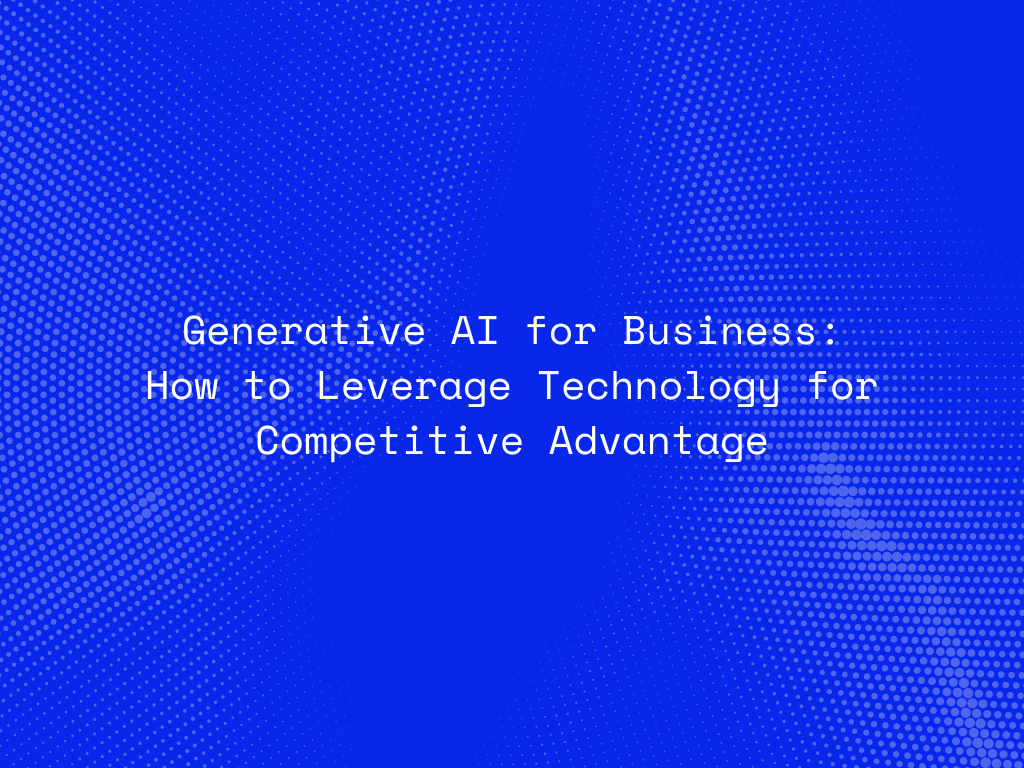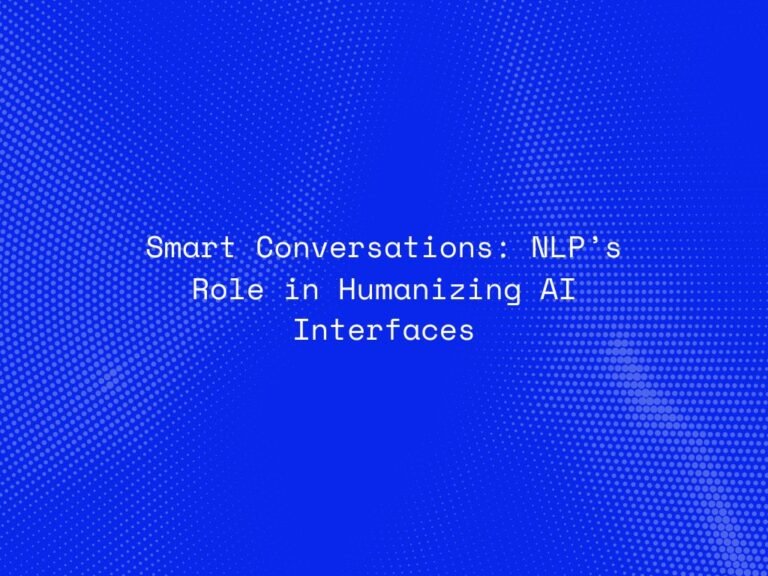Generative AI has emerged as a transformative technology with the potential to revolutionize various aspects of business operations. By leveraging machine learning algorithms to create new content, ideas, and solutions, generative AI offers businesses a unique opportunity to gain a competitive edge. Whether it’s automating content creation, optimizing product designs, or enhancing customer engagement, generative AI can be a game-changer for companies looking to innovate and stay ahead of the competition. In this blog, we’ll explore how businesses can harness the power of generative AI to drive growth, efficiency, and competitive advantage.
Understanding Generative AI
Generative AI refers to a class of algorithms that can create new data that resembles the training data used to build the model. Unlike traditional AI, which is primarily focused on analyzing existing data to make predictions or decisions, generative AI can produce original content. This capability has far-reaching applications in various business domains, including marketing, product development, customer service, and more.
Key examples of generative AI technologies include:
- Generative Adversarial Networks (GANs): GANs consist of two neural networks—a generator and a discriminator—that work together to create realistic data, such as images or text, that mimics the original dataset.
- Variational Autoencoders (VAEs): VAEs are used to generate new data points by learning the underlying distribution of the training data. They are often used in creative applications, such as generating new product designs.
- Language Models (e.g., GPT): Language models like GPT (Generative Pre-trained Transformer) are capable of generating human-like text based on a given prompt, making them useful for content creation, customer support, and more.
Connect With Us
How Generative AI Can Drive Business Growth
Generative AI has the potential to impact various aspects of a business, from product innovation to marketing strategies. Here are some key areas where generative AI can be leveraged for competitive advantage:
1. Automating Content Creation
One of the most immediate applications of generative AI is in content creation. Businesses can use AI to generate high-quality content at scale, saving time and resources while maintaining a consistent brand voice. Key benefits include:
- Personalized Marketing Content: Generative AI can create personalized marketing content tailored to specific audience segments, improving engagement and conversion rates. For example, AI can generate email campaigns, social media posts, and even video scripts that resonate with individual customers.
- SEO Optimization: AI can generate content optimized for search engines by analyzing current trends and keywords. This ensures that your content ranks higher in search results, driving more traffic to your website.
- Scalable Content Production: With AI, businesses can produce large volumes of content quickly and efficiently, making it easier to keep up with the demands of content marketing.
2. Enhancing Product Design and Innovation
Generative AI can be a powerful tool for product design and innovation. By analyzing existing designs and data, AI can generate new product ideas and optimize existing ones:
- Design Optimization: AI can generate multiple design variations based on specific parameters, allowing businesses to explore different options and select the best one. This can be particularly useful in industries like fashion, automotive, and consumer electronics.
- Rapid Prototyping: Generative AI can create digital prototypes that simulate the look, feel, and functionality of a product. This speeds up the design process and reduces the time to market.
- Customization and Personalization: AI can generate personalized products based on individual customer preferences, enabling businesses to offer unique, tailored experiences that stand out in a crowded market.
3. Improving Customer Engagement
Generative AI can enhance customer engagement by providing personalized and interactive experiences. Here’s how:
- AI-Powered Chatbots: Chatbots powered by generative AI can engage customers in natural, human-like conversations, providing personalized support and recommendations. These chatbots can handle a wide range of customer queries, freeing up human agents to focus on more complex issues.
- Dynamic Content Generation: AI can generate personalized content in real-time based on customer interactions. For instance, an e-commerce website can use AI to generate personalized product recommendations, increasing the likelihood of a purchase.
- Interactive Marketing Campaigns: Businesses can use generative AI to create interactive marketing campaigns that adapt to customer behavior in real-time, offering a more engaging and immersive experience.
Connect With Us
4. Optimizing Supply Chain and Operations
Generative AI can also be used to optimize supply chain management and business operations:
- Predictive Analytics: AI can analyze historical data to predict future trends and demand, helping businesses make informed decisions about inventory management, production scheduling, and logistics.
- Process Automation: Generative AI can automate routine tasks, such as data entry and report generation, improving efficiency and reducing the risk of errors.
- Resource Allocation: AI can optimize resource allocation by generating models that predict the most efficient use of labor, materials, and time, helping businesses reduce costs and improve productivity.
5. Driving Innovation in Marketing Strategies
Generative AI can be a game-changer in developing and executing marketing strategies:
- Ad Campaign Generation: AI can generate ad copy, images, and even videos tailored to specific audience segments, improving the effectiveness of advertising campaigns. This can lead to higher engagement rates and a better return on investment (ROI).
- Audience Insights: Generative AI can analyze customer data to generate insights into audience behavior, preferences, and trends. This enables businesses to develop more targeted and effective marketing strategies.
- Dynamic Pricing Models: AI can generate pricing models that adapt to market conditions and customer behavior in real-time, helping businesses maximize revenue and stay competitive.
6. Enhancing Employee Productivity
Generative AI can also be used to enhance employee productivity by automating routine tasks and providing decision support:
- Automated Reporting: AI can generate reports based on data analysis, providing employees with valuable insights without the need for manual data processing. This allows employees to focus on more strategic tasks.
- Decision Support: Generative AI can generate scenarios and simulations that help employees make informed decisions. For example, AI can simulate the impact of different business strategies, allowing leaders to choose the best course of action.
- Training and Development: AI can generate personalized training programs for employees based on their skills and learning preferences, helping them upskill more effectively.
Connect With Us
Ethical Considerations and Challenges
While generative AI offers numerous benefits, businesses must also consider the ethical implications and potential challenges associated with its use:
- Bias and Fairness: Generative AI models can sometimes produce biased outputs if they are trained on biased data. Businesses must ensure that their AI systems are trained on diverse and representative datasets to avoid perpetuating bias.
- Data Privacy: The use of AI often involves processing large amounts of personal data. Businesses must comply with data privacy regulations and ensure that customer data is handled responsibly.
- Intellectual Property: As generative AI creates new content, questions around intellectual property rights may arise. Businesses need to establish clear policies regarding the ownership and use of AI-generated content.
- Transparency and Accountability: It’s important for businesses to be transparent about how they use generative AI, especially when it comes to customer-facing applications. Ensuring that AI-generated content is clearly identified can help maintain trust with customers.
Conclusion
Generative AI presents a wealth of opportunities for businesses to gain a competitive advantage by automating content creation, enhancing product design, optimizing operations, and improving customer engagement. By strategically implementing generative AI, businesses can unlock new levels of innovation and efficiency, driving growth and success in a rapidly evolving marketplace.
However, to fully realize the potential of generative AI, businesses must also navigate the ethical challenges and ensure that their use of AI aligns with their values and regulatory requirements. By doing so, they can leverage this powerful technology to create meaningful value for their customers, employees, and stakeholders, securing their position as leaders in their respective industries.




